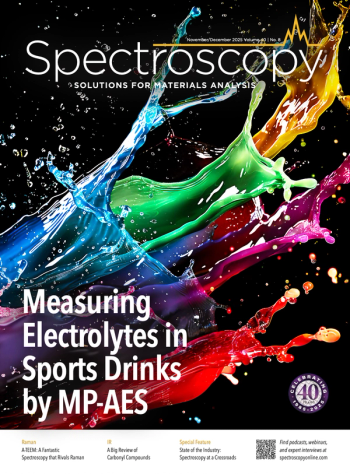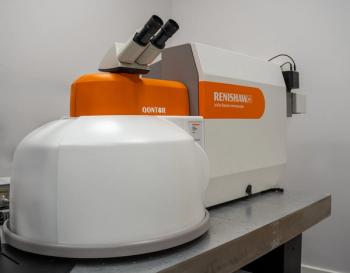
Best of the Week: Advancing Energy Applications, Deep-Sea Exploration, Semiconductor Fabrication
Key Takeaways
- Spectroscopy is crucial in transitioning the energy industry towards sustainability, aiding in exploration and innovation across various applications.
- Hyperspectral imaging is transforming fields like agriculture, diagnostics, and environmental monitoring, with AI and miniaturization enhancing accessibility.
Top articles published this week include a tutorial on spectroscopy in the energy industry, a look at how hyperspectral imaging (HSI) is advancing science and medicine, and an inside look at the Alvin submersible and how spectroscopy has aided its operations in exploring the deep sea.
This week, Spectroscopy published a variety of articles highlighting recent studies in several application areas. Key techniques highlighted in these articles include Raman spectroscopy, hyperspectral imaging, and inductively coupled plasma–mass spectrometry (ICP-MS). Happy reading!
The U.S. energy industry is evolving from its fossil-fuel roots toward a future driven by sustainability, efficiency, and advanced technology. Spectroscopy is playing a pivotal role across this transition by enhancing oil and gas exploration, renewable energy development, battery innovation, hydrogen production, and carbon management. Techniques such as infrared (IR), Raman, ultraviolet–visible (UV–vis), nuclear magnetic resonance (NMR), ICP-MS, and laser-induced breakdown spectroscopy (LIBS) enable researchers to analyze molecular structures, monitor reactions, and improve material performance (1). These analytical insights are driving innovation in solar cells, catalysts, and energy storage systems (1). As America balances progress with responsibility, spectroscopy remains central to building a cleaner, more efficient, and sustainable energy future.
A new review article published in Technologies explores the rapid progress and wide-ranging applications of hyperspectral imaging (HSI) (2). Unlike traditional RGB cameras, HSI captures hundreds of spectral bands, enabling precise material and tissue identification (2). The review highlights HSI’s success in counterfeit detection, environmental monitoring, precision agriculture, food quality control, and medical diagnostics, including cancer detection. Despite challenges like high costs and large data volumes, advances in artificial intelligence (AI), miniaturization, and real-time processing are making HSI more accessible. The authors predict that portable, AI-driven HSI systems will soon become essential across scientific and industrial fields (2).
This article reviews Susan Casey’s The Underworld: Journeys to the Depths of the Ocean and ties the book to how spectroscopy has advanced deep-sea exploration. Once limited by technology, the Alvin submersible, which was first launched in 1964 and one of the main subjects in Casey’s book, now carries spectroscopic instruments such as the Deep Ocean Raman In Situ Spectrometer (DORISS) and DORISS II for real-time chemical and mineral analysis (3). Raman and optical spectroscopy enable in situ identification of gases, minerals, and bioluminescent compounds, revealing how life thrives under extreme pressure (3). These tools have transformed Alvin into a mobile underwater laboratory, showcasing how spectroscopy deepens understanding of Earth’s least explored frontier.
A recent study published in Environmental Technology & Innovation by researchers from Northeastern University and collaborators in China demonstrates how drones and satellites can jointly monitor nutrient pollution in wetlands (4). Using HSI, the team developed new three-band indices to estimate chlorophyll-a and total nitrogen with high accuracy (R² = 0.88 and 0.86) (4). Unmanned aerial vehicle(UAV) data were validated and scaled to Gaofen-5B satellite imagery, revealing seasonal nutrient trends in the Liao River Delta linked to oil extraction and aquaculture. This integrated UAV–satellite framework enables rapid, large-scale, and real-time water quality monitoring to support sustainable wetland management and pollution prevention (4).
A recent Spectroscopy Peer Exchange™ brought together experts from Covalent Metrology, PerkinElmer, IAS, and Linde to discuss the top challenges in semiconductor manufacturing for 2025. Key topics included supply chain instability, rising purity demands, and regulatory pressures on critical materials. The panel emphasized spectroscopy’s expanding role in detecting trace contaminants through techniques like ICP-MS, vapor phase decomposition (VPD), gas exchange devices (GED), and time-of-flight secondary ion mass spectrometry (TOF-SIMS) (5). Automation, real-time monitoring, and online data integration are transforming cleanroom operations and continuous manufacturing (5). Water purity and PFAS control also remain major concerns. Overall, the experts agreed that innovation, collaboration, and precision spectroscopy are essential for next-generation semiconductor production (5).
References
- Wetzel, W. A Beginner’s Guide to Spectroscopy in Energy Applications. Spectroscopy. Available at:
https://www.spectroscopyonline.com/view/a-beginner-s-guide-to-spectroscopy-in-energy-applications (accessed 2025-10-29). - Workman, Jr., J. Hyperspectral Imaging Is Transforming Science, Medicine, and Industry. Spectroscopy. Available at:
https://www.spectroscopyonline.com/view/hyperspectral-imaging-is-transforming-science-medicine-and-industry (accessed 2025-10-29). - Wetzel, W. How Spectroscopy Can Explore the Underworld on Earth. Spectroscopy. Available at:
https://www.spectroscopyonline.com/view/how-spectroscopy-can-explore-the-underworld-on-earth (accessed 2025-10-29). - Workman, Jr., J. Drones and Satellites Used to Map Wetland Water Quality in Coastal River Delta. Spectroscopy. Available at:
https://www.spectroscopyonline.com/view/drones-and-satellites-used-to-map-wetland-water-quality-in-coastal-river-delta (accessed 2025-10-29). - Hroncich, C. Spectroscopy at the Core: Overcoming Efficiency and Purity Challenges in Semiconductor Fabrication. Spectroscopy. Available at:
https://www.spectroscopyonline.com/view/spectroscopy-efficiency-purity-challenges-semiconductor-fabrication (accessed 2025-10-29).
Newsletter
Get essential updates on the latest spectroscopy technologies, regulatory standards, and best practices—subscribe today to Spectroscopy.



